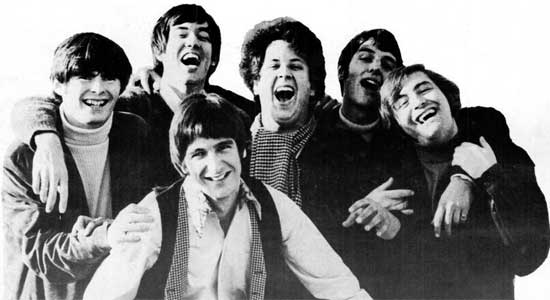
I was speaking with old pal Dennis Davison of Los Angeles’ Jigsaw Seen the other day about one of our favorite pop/rock groups from the ’60s, the Turtles. We both agreed the L.A.-based combo that showcased the rock-solid lead vocals of Howard Kaylan and the soaring falsetto of Mark Volman doesn’t get enough credit for its brilliant body of work.
In the final six weeks of 1969, I saw a handful of major rock performances in the San Francisco bay area by the Rolling Stones, Crosby, Stills, Nash & Young and Creedence Clearwater Revival. But the Turtles, appearing at the same time in the suburban gymnasium of Santa Clara’s Buchser High School, easily equaled any of its hotshot competition.
The Turtles had plenty of hits, many penned by the songwriting team of Gary Bonner and Alan Gordon. The groundbreaking nature of one of these Bonner & Gordon gems, “You Know What I Mean,” may not be apparent to the casual listener, so used to hearing the classic American pop-song format. Normally, an eight-bar melody is followed by a repeat of the same eight-bar phrase. Then comes eight bars of a different “B” melody known as the bridge, followed by eight more bars of the original “A” melody. It’s Music Notation 101. Nothing could be simpler.
“You Know What I Mean,” which hit the top 20 of the U.S. singles charts in 1967, has none of that going on. A fervent plea (“You and I should be together”) to a potential girlfriend, Kaylan’s powerful vocal line unfolds like you’re opening segment after segment of a plastic tape measure, rising and falling so naturally the listener may never notice anything unusual going on. The heartfelt, non-stop entreaty is finished, and we’ve been waiting for her answer for almost 50 years now. If she’s a fan of innovative pop music, she’d be a fool to pass him by.
—Jud Cost






